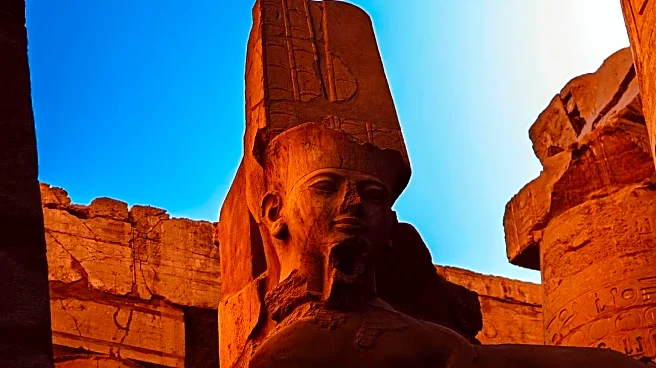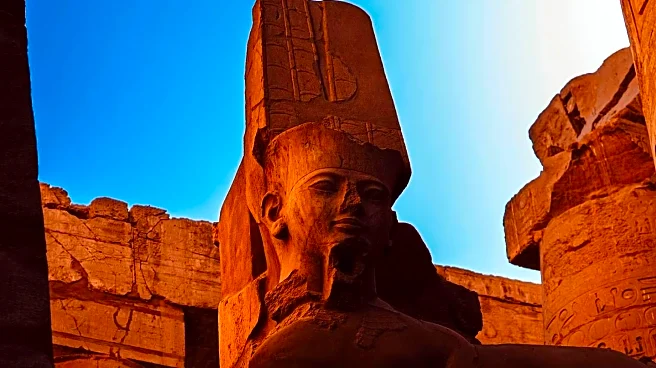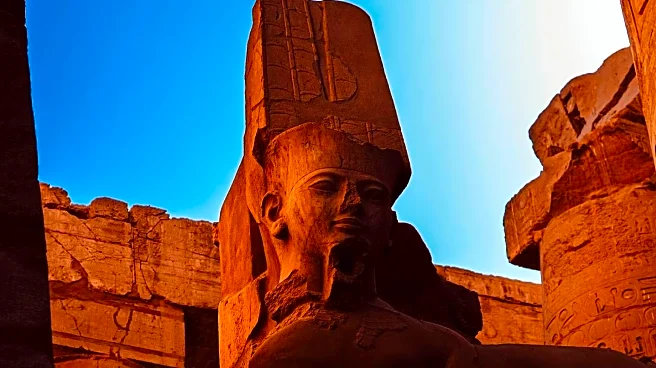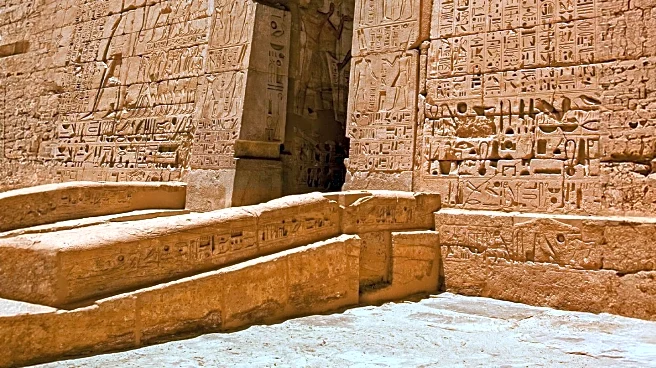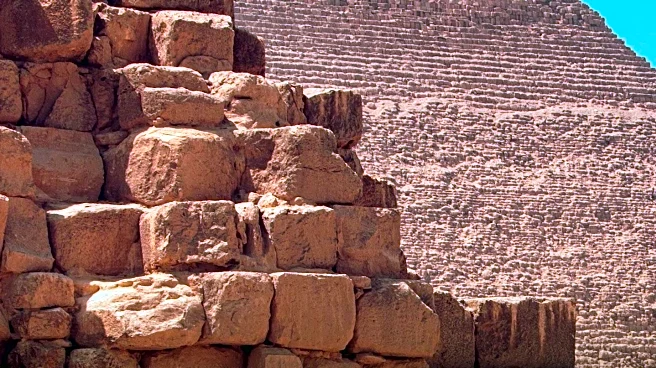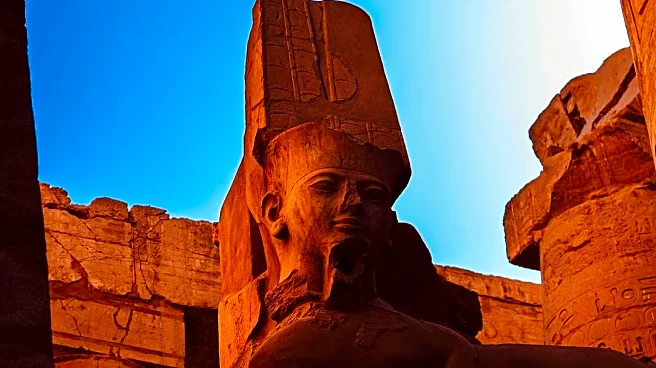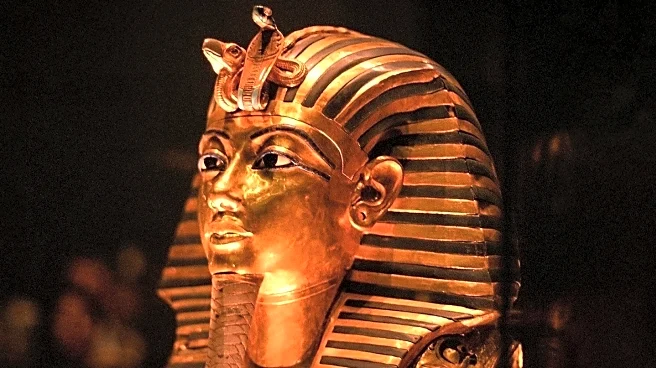What's Happening?
The tomb of Amenhotep III in Luxor has reopened after a comprehensive twenty-year restoration project. The tomb, which dates back 3,000 years, had been looted since 1799. The restoration efforts, led by UNESCO and Japanese experts, have successfully restored the 18th dynasty murals, installed new lighting, and improved the safety of the stairs. These efforts have revitalized the tomb, making it accessible to the public once again and preserving its historical significance.
Why It's Important?
The reopening of Amenhotep III's tomb is a significant event for both historical preservation and tourism in Egypt. The restoration not only protects a vital piece of ancient history but also enhances Egypt's cultural heritage, potentially boosting tourism in the region. The involvement of international organizations like UNESCO highlights the global importance of preserving such sites. This project underscores the collaborative efforts required to maintain and restore historical landmarks, which are crucial for educational and cultural enrichment worldwide.
What's Next?
With the tomb now open to the public, it is expected to attract tourists and scholars interested in ancient Egyptian history. The successful restoration may serve as a model for future projects aimed at preserving other historical sites. Additionally, the increased tourist activity could provide economic benefits to the local community in Luxor, further emphasizing the importance of such restoration efforts.
Beyond the Headlines
The restoration of Amenhotep III's tomb also raises awareness about the challenges of preserving ancient sites in the face of looting and environmental degradation. It highlights the need for ongoing international cooperation and funding to protect cultural heritage sites worldwide. The project may inspire similar initiatives in other countries, fostering a global commitment to preserving history for future generations.

